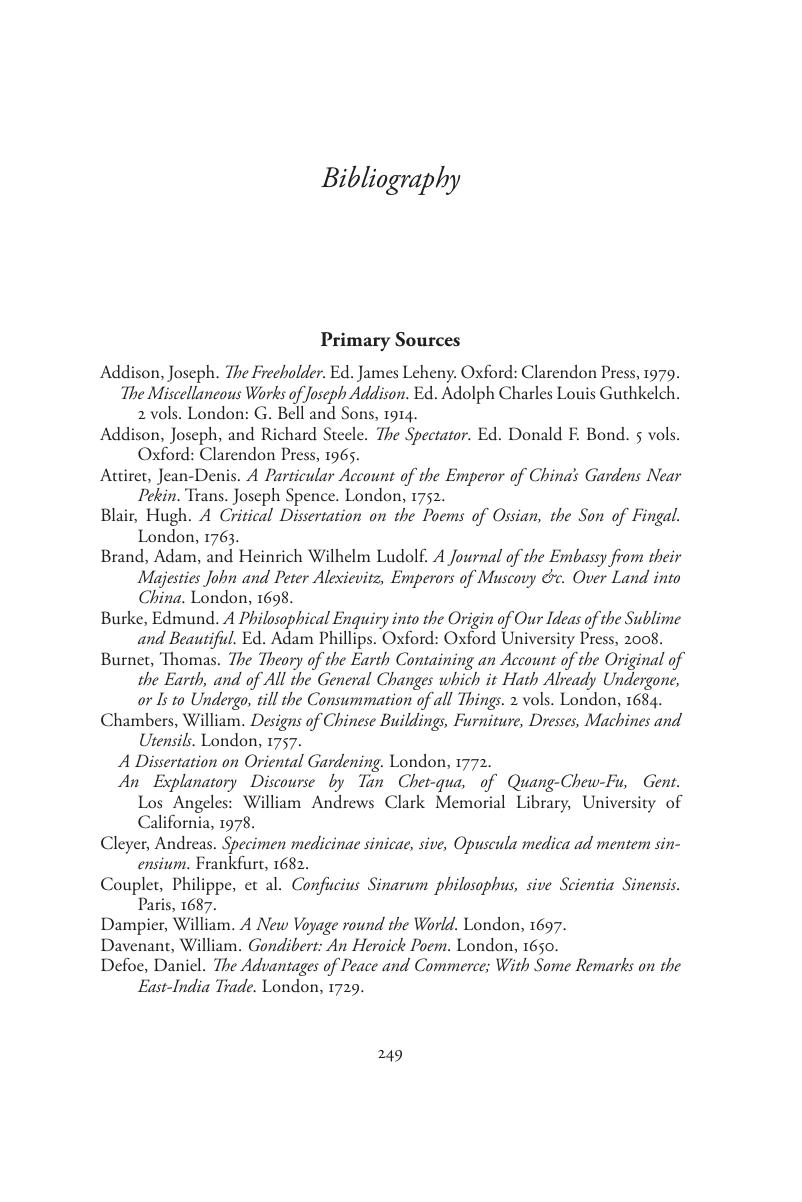Book contents
- China and the Writing of English Literary Modernity, 1690–1770
- China and the Writing of English Literary Modernity, 1690–1770
- Copyright page
- Dedication
- Contents
- Illustrations
- Acknowledgements
- Introduction: China in English Literary Modernity
- Chapter 1 China between the Ancients and the Moderns
- Chapter 2 Robinson Crusoe and the Great Wall of China
- Chapter 3 The New, Uncommon, or Strange: China in The Spectator
- Chapter 4 Oliver Goldsmith’s Serial Chinaman
- Chapter 5 Thomas Percy’s Chinese Miscellanies and the Reliques of Ancient English Poetry
- Notes
- Bibliography
- Index
- References
Bibliography
Published online by Cambridge University Press: 20 April 2018
- China and the Writing of English Literary Modernity, 1690–1770
- China and the Writing of English Literary Modernity, 1690–1770
- Copyright page
- Dedication
- Contents
- Illustrations
- Acknowledgements
- Introduction: China in English Literary Modernity
- Chapter 1 China between the Ancients and the Moderns
- Chapter 2 Robinson Crusoe and the Great Wall of China
- Chapter 3 The New, Uncommon, or Strange: China in The Spectator
- Chapter 4 Oliver Goldsmith’s Serial Chinaman
- Chapter 5 Thomas Percy’s Chinese Miscellanies and the Reliques of Ancient English Poetry
- Notes
- Bibliography
- Index
- References
Summary

- Type
- Chapter
- Information
- China and the Writing of English Literary Modernity, 1690–1770 , pp. 249 - 271Publisher: Cambridge University PressPrint publication year: 2018



